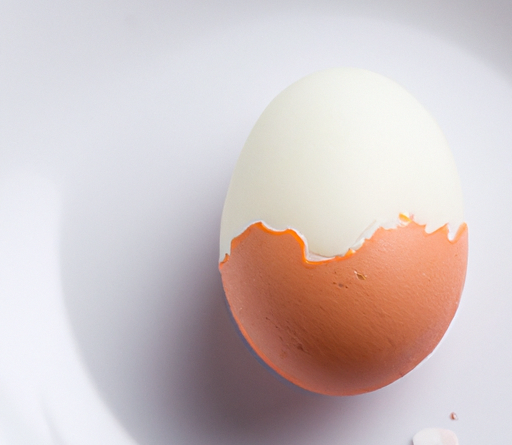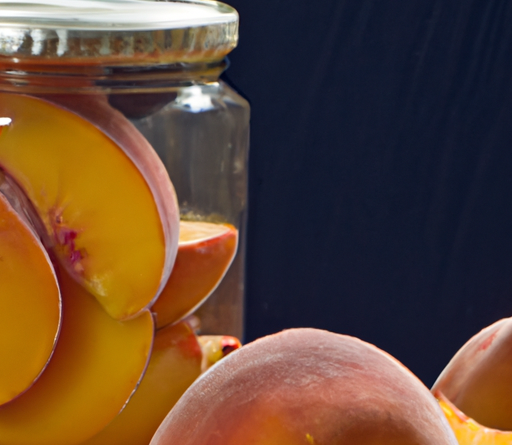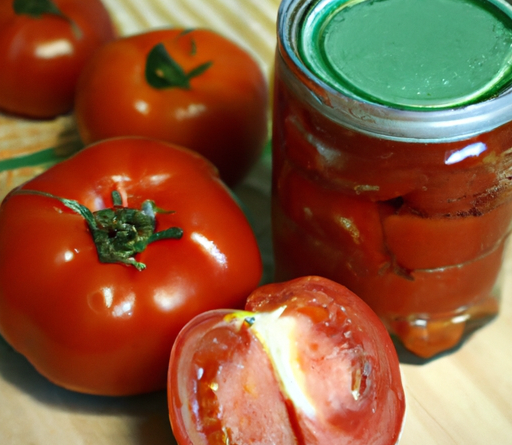
Hey there! Are you a fan of fresh basil in your recipes? Well, I’ve got a question for you – have you ever wondered how to harvest fresh basil? Because let me tell you, it’s a game-changer when you can pick your own basil leaves straight from the plant. Trust me, the aroma and flavor are unbeatable!
So, let’s dive into it. Harvesting fresh basil is actually quite simple. First, make sure your basil plant has grown to a decent size, with multiple sets of leaves. Then, using clean gardening shears or scissors, snip the topmost leaves from each stem, leaving a few inches of stem on the plant. This allows for new growth to occur.
In this article, we’ll go into more detail about the best time to harvest basil and how to properly care for your plant to ensure a continuous supply of fresh basil leaves. From tips on trimming your plant to storing the harvested leaves, we’ve got you covered. By the end of this article, you’ll be a basil harvesting expert and your recipes will never be the same! So, keep reading to learn more.
Table of Contents
How to Harvest Fresh Basil
Basil is a versatile and aromatic herb that adds a burst of flavor to countless dishes. Whether you’re growing it in your garden or have a potted basil plant on your windowsill, knowing when and how to harvest fresh basil is essential to maximize its flavor and ensure continued growth. In this article, we will guide you through the process of harvesting basil, from determining the optimal stage of growth to properly storing and preserving your harvest. So grab your pruning shears and let’s get started!
Determining the Optimal Stage of Growth
Timing is crucial when it comes to harvesting basil. For the best flavor and aroma, it’s important to harvest basil when it has reached its optimal stage of growth. This is typically when the plant has developed a lush and leafy appearance, with healthy green leaves that are not yet fully matured or showing any signs of wilting. Additionally, basil leaves are at their most flavorful just before the plant starts to flower.
Considering Weather Conditions
Before you embark on your basil harvesting adventure, take a moment to consider the weather conditions. Harvesting basil on a dry and sunny day is ideal, as moisture can promote the growth of mold and other fungal diseases. If you live in a region with high humidity, it’s best to harvest basil early in the morning when the leaves are still cool and have not been exposed to the direct sunlight for an extended period.
Avoiding Harvesting in Extreme Temperatures
Extreme temperatures can have a negative impact on the flavor and quality of harvested basil. It’s best to avoid harvesting basil during the hottest part of the day when the leaves may be subjected to intense heat. Similarly, harvesting basil during extremely cold temperatures can cause the leaves to become limp and lose their aromatic qualities. Aim to harvest basil when the temperatures are mild and comfortable.
Selecting Sharp and Clean Pruning Shears
Now that you’ve determined the optimal stage of growth and the ideal weather conditions, it’s time to gather the necessary tools for harvesting basil. Sharp and clean pruning shears are essential for the task, as they will ensure clean cuts that promote the plant’s continued growth. Dull or unclean pruning shears can result in ragged cuts that may damage the basil stems and hinder their ability to regenerate.
Preparing a Clean Harvesting Container
Having a clean harvesting container ready will make the process of collecting your freshly harvested basil much easier. Choose a container that is spacious enough to accommodate the amount of basil you plan to harvest. It’s best to use a clean and sturdy container that won’t easily tip over or crush the delicate leaves. Cleaning the container beforehand will help prevent the transfer of any contaminants onto your harvest.
Wearing Protective Gloves
While not absolutely necessary, wearing protective gloves can be beneficial when harvesting basil, especially if you have sensitive skin or are prone to allergies. Some people may experience skin irritation or allergic reactions when handling basil leaves, particularly if they come into contact with the plant’s oils. Wearing gloves will provide an additional layer of protection and ensure a comfortable harvesting experience.
Locating the Healthiest Stems
To begin the actual harvesting process, carefully examine your basil plant and locate the healthiest stems. Look for stems that have a vibrant green color, without any signs of yellowing or browning. Healthy stems will be firm and sturdy, and the leaves attached to them should have a strong aroma. Avoid harvesting stems that appear weak, damaged, or are infested with pests.
Identifying the Leaf Nodes
Leaf nodes are the small joints on the basil stems where new leaves sprout. When harvesting basil, it’s important to cut above a leaf node to encourage new growth and prevent the stem from becoming bare. Look for a set of healthy leaves that are close to the stem, and position your pruning shears just above the leaf node. This will ensure that the remaining part of the stem can continue to produce new leaves.
Selecting Stems Based on Desired Quantity
The quantity of basil you plan to harvest will depend on your needs and preferences. If you only need a small amount for immediate use, you can selectively harvest a few stems at a time, leaving the rest of the plant intact. On the other hand, if you have an abundance of basil and want to preserve a larger quantity, you can opt for a more extensive harvest. Just remember to always leave enough stems and foliage for the plant to continue its growth.
Taking Careful Cuts at a 45-Degree Angle
When making the actual cuts, it’s important to do so at a 45-degree angle. This ensures a clean and precise cut that will facilitate water absorption and prevent moisture build-up. Hold the basil stem firmly with one hand and position the pruning shears at a 45-degree angle. Make a swift and decisive cut just above the chosen leaf node, avoiding any unnecessary pressure that may crush the stem.
Cutting Above a Healthy Pair of Leaves
To promote the health and vitality of your basil plant, it’s crucial to leave a healthy pair of leaves intact on each stem you harvest. These leaves will continue to provide energy for the plant through photosynthesis, allowing it to regenerate and produce more foliage. Make sure to position your pruning shears just above a healthy pair of leaves when making your cuts, taking care not to damage or remove them.
Leaving the Top Leaves Intact
When harvesting basil, it’s essential to leave the top leaves of each stem intact. By doing so, you allow the plant to receive sunlight and continue its growth. Removing the top leaves can slow down the plant’s regrowth process and affect its overall health. If you require more basil leaves than are available on the stem you’re harvesting, select another stem and repeat the process, leaving the top leaves untouched.
Rinsing and Drying the Basil
After you’ve completed the harvesting process, it’s time to prepare your freshly harvested basil for storage or immediate use. Fill a clean sink or a large bowl with cool water and gently place the harvested basil inside. Swirl the basil around in the water to dislodge any dirt or debris. Give the leaves a thorough rinse, making sure to remove any residual soil. Once clean, gently shake off the excess water and pat the leaves dry with a clean towel or paper towels.
Using a Damp Paper Towel to Wrap the Stems
To keep your freshly harvested basil fresh for a longer period, wrap the stems with a damp paper towel. This will help prevent wilting and maintain the herb’s crispness. Simply dampen a paper towel with cool water and gently wrap it around the base of the stems, ensuring that the entire lower portion of the stems is covered. This method of wrapping will help provide the basil with the moisture it needs without saturating it.
Placing Basil in a Plastic Bag
To further prolong the freshness of your harvested basil, transfer the wrapped stems into a plastic bag. A resealable plastic bag or a zipper-lock bag works well for this purpose. Place the wrapped basil inside the bag and seal it, making sure to remove as much air as possible without crushing the basil. The plastic bag will help create a controlled environment that minimizes moisture loss and extends the shelf life of the basil.
Freezing Basil Leaves in Ice Cube Trays
Freezing basil leaves is an excellent way to preserve its freshness and flavor for an extended period. To freeze basil, start by washing and drying the leaves thoroughly. Remove the leaves from the stems and place them into ice cube trays. Fill each cube compartment with water or olive oil, making sure the basil leaves are completely submerged. Place the ice cube tray in the freezer and allow the basil to freeze solid. Once frozen, transfer the basil cubes into a freezer-safe bag or container for long-term storage.
Making Basil Pesto for Preservation
Another popular method of preserving basil is by making basil pesto. This delicious spread can be used in a variety of dishes, from pasta to sandwiches. To make basil pesto, combine fresh basil leaves, garlic, pine nuts, parmesan cheese, and olive oil in a food processor or blender. Blend the ingredients until you have a smooth paste-like consistency. Transfer the pesto into small, airtight containers, and freeze them for future use. Make sure to leave a little room at the top of each container to allow for expansion during freezing.
Air-Drying Basil Leaves
Air-drying is a traditional method of preserving basil that can help concentrate its flavor. To air-dry basil, start by tying a small bunch of basil stems together with kitchen twine. Hang the bunches upside-down in a warm, well-ventilated area away from direct sunlight. Allow the basil to dry fully, which typically takes about a week or two. Once dry, remove the leaves from the stems and store them in an airtight container. Air-dried basil leaves can be crushed or crumbled and used as a seasoning in various dishes.
Adding Fresh Basil to Salads and Sandwiches
Fresh basil leaves make a delightful addition to salads and sandwiches, bringing a burst of flavor and vibrant color to your culinary creations. Tear or chop the fresh basil leaves and toss them into a crisp green salad or layer them onto sandwiches for a taste of freshness. The aromatic qualities of fresh basil can elevate even the simplest of dishes to new heights.
Whipping Up a Basil-Infused Pasta Dish
Basil pairs exceptionally well with pasta, and infusing pasta dishes with its aromatic flavors is a surefire way to create a memorable meal. Once your pasta is cooked al dente, toss it in a sauce made from sautéed garlic, olive oil, and freshly chopped basil. The heat from the pasta will release the flavors of the basil, resulting in a deliciously infused dish that is both satisfying and easy to prepare.
Incorporating Basil into Sauces and Soups
Basil can add a delightful depth of flavor to sauces and soups, turning an ordinary dish into something extraordinary. Adding a handful of fresh basil leaves to tomato-based sauces imparts a fresh and herbaceous taste that complements the sweetness of the tomatoes. Similarly, stirring in fresh basil leaves to soups, such as minestrone or tomato soup, adds a fragrant and aromatic note that enhances the overall dining experience.
Regularly Pinching Off Basil Flowers
To ensure the continued growth and productivity of your basil plant, it’s essential to regularly pinch off any basil flowers that appear. When basil flowers, it puts its energy into producing seeds rather than developing new leaves. By pinching off the flowers as soon as they emerge, you redirect the plant’s energy towards foliage production, resulting in a bushier and more productive basil plant.
Trimming Overgrown Branches to Encourage Growth
If you notice any overgrown or leggy branches on your basil plant, it’s a good idea to trim them back. Trimming promotes new growth and helps maintain the shape and appearance of the plant. Using clean pruning shears, carefully trim back any branches that have become excessively long or are blocking sunlight from reaching the rest of the plant. Aim to make the cuts just above a leaf node to encourage new growth.
Watering and Fertilizing Basil Properly
Proper watering and fertilization are crucial for the health and vitality of basil plants. Basil prefers well-draining soil, so it’s important to water it regularly without overwatering. Keep the soil moist but not waterlogged, allowing the top inch of the soil to dry out slightly before watering again. When it comes to fertilization, using a balanced liquid fertilizer every three to four weeks during the growing season will provide the essential nutrients necessary for robust growth.
Harvesting Basil Leaves Too Early
One common mistake to avoid when harvesting basil is picking the leaves too early. Basil leaves are at their most flavorful when they have fully developed and are not yet showing any signs of wilting. Harvesting basil leaves too early can result in a milder flavor and may even stunt the plant’s growth. It’s best to wait until the leaves have reached their optimal stage of growth before harvesting them.
Neglecting to Prune Basil Regularly
Regular pruning is essential for the overall health and vitality of basil plants. Neglecting to prune can result in an overgrown and leggy plant that is more susceptible to diseases and pests. By regularly pinching off the basil flowers and trimming overgrown branches, you encourage the plant to continue producing new foliage and maintain a compact and healthy appearance.
Improperly Storing Basil After Harvest
After harvesting basil, improper storage can shorten its shelf life and diminish its flavor. It’s important to rinse and dry the basil thoroughly before wrapping the stems with a damp paper towel. Placing the wrapped basil in a plastic bag and storing it in the refrigerator will help prolong its freshness. Avoid storing basil in overly cold temperatures, as this can cause the leaves to turn black and become limp.
Summarizing the Importance of Proper Basil Harvesting
Harvesting fresh basil is a delightful and rewarding experience that allows you to enjoy the full flavor and aroma of this versatile herb. By determining the optimal stage of growth, considering the weather conditions, and using the right tools, you can ensure a successful harvest. Properly storing and preserving your harvested basil will allow you to enjoy its deliciousness for an extended period and experiment with various culinary applications.
Highlighting the Versatility of Basil in Culinary Applications
One of the most appealing aspects of basil is its versatility in the kitchen. From salads and sandwiches to pasta dishes and sauces, basil can enhance a wide range of recipes. Its aromatic qualities and bold flavor provide a refreshing and vibrant taste that elevates any dish. Don’t be afraid to experiment with basil in your cooking and discover new and exciting ways to incorporate it into your favorite recipes.
Encouraging Readers to Enjoy the Bounty of Fresh Basil
Whether you’re a seasoned gardener or a beginner with a small potted plant on your windowsill, harvesting fresh basil is a simple and fulfilling process. By following the proper techniques and guidelines outlined in this article, you can ensure a bountiful harvest of flavorful basil leaves. So go ahead, harvest your basil, and savor the joy of cooking with this aromatic herb.








